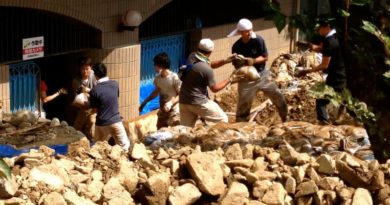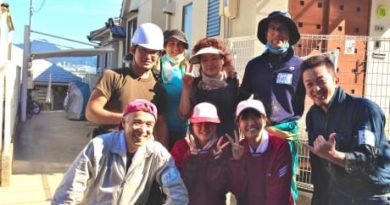Volunteering (Kuchita) 1 Month After the Disaster
On the first Saturday of August, we volunteered once again at the Kuchita area of Asa-kita-ku. Thanks to NHK World, this was the first volunteer center I had heard about, and volunteered at, as they were quickly accepting volunteers from outside the area soon after the disaster. This time, it was nice to see some progress but it was also evident that there is still a lot more work to be done. 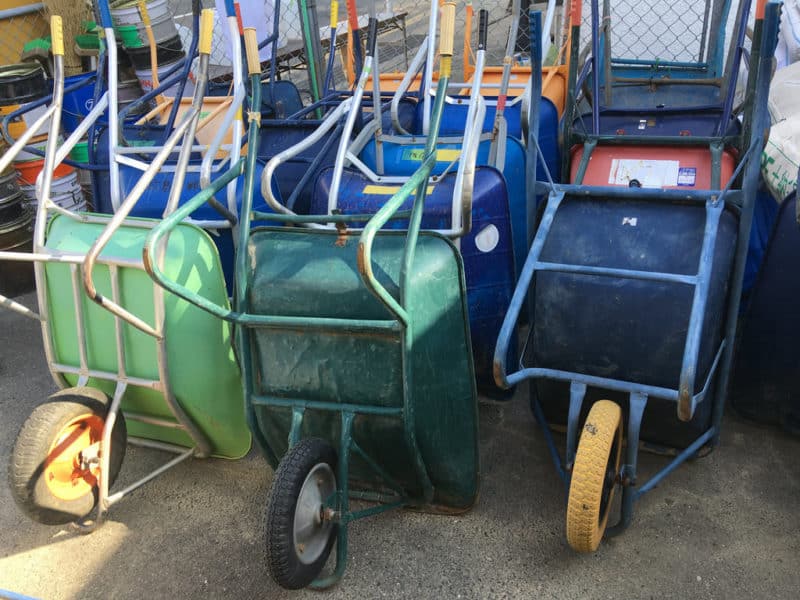 English Volunteering Handbook PDF gives advice in detail useful for 1st-time volunteers in Japan. Or see the post listing the pages of the English Handbook for Landslide Disaster Volunteering here. At the volunteer center, there are a lot of tools to use (as well as on-location at the volunteer sites) so there is no need to bring your own. There are also hats, towels, masks and gloves among other things for volunteers to freely use. Upon arrival, volunteers are asked to fill in the Volunteer Form below with information about whether you have volunteered before or not, your name, age, gender, address, cell number and how long you would like to volunteer.
English Volunteering Handbook PDF gives advice in detail useful for 1st-time volunteers in Japan. Or see the post listing the pages of the English Handbook for Landslide Disaster Volunteering here. At the volunteer center, there are a lot of tools to use (as well as on-location at the volunteer sites) so there is no need to bring your own. There are also hats, towels, masks and gloves among other things for volunteers to freely use. Upon arrival, volunteers are asked to fill in the Volunteer Form below with information about whether you have volunteered before or not, your name, age, gender, address, cell number and how long you would like to volunteer. 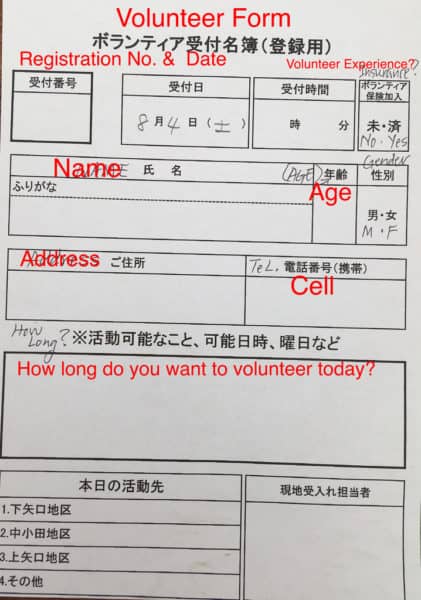 Every time volunteering is different, even when going back to the same volunteer center as there are many different locations that have signed up for volunteer help that is given priority on different days. Listen here to a discussion of our August volunteering experience at Kuchita with first-time volunteer Emma with forth-time volunteers Jaime and Joy.
Audio Player
Every time volunteering is different, even when going back to the same volunteer center as there are many different locations that have signed up for volunteer help that is given priority on different days. Listen here to a discussion of our August volunteering experience at Kuchita with first-time volunteer Emma with forth-time volunteers Jaime and Joy.
Audio Player
 The staff at Kuchita are very welcoming and helpful. They explained how August is a very important month for volunteers to help clear the drains and water flow areas before the typhoons and storms in September arrive. This volunteer center will be open every day registering volunteers from 8am to 9am and all work finishes by early afternoon.
The staff at Kuchita are very welcoming and helpful. They explained how August is a very important month for volunteers to help clear the drains and water flow areas before the typhoons and storms in September arrive. This volunteer center will be open every day registering volunteers from 8am to 9am and all work finishes by early afternoon. 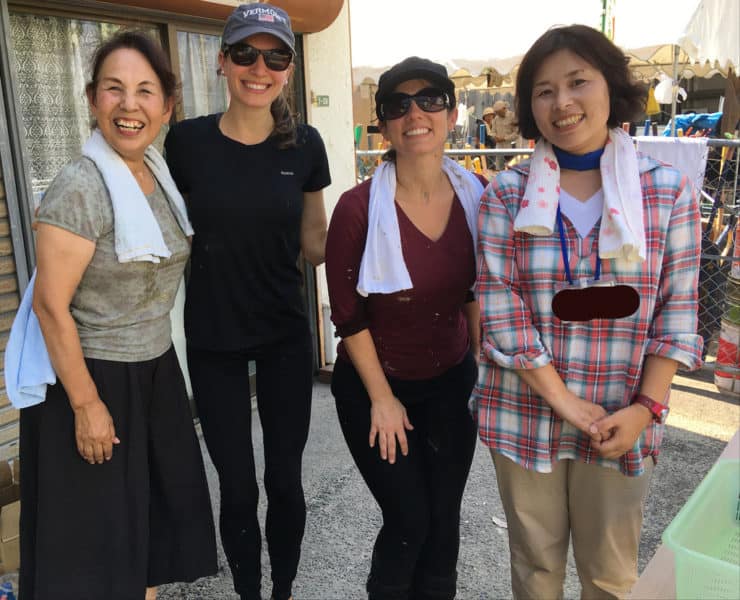 Driving through the hillside areas damaged by the landslide, there is a lot of machinery hard at work clearing big areas of mud and debris, but the mud inside houses (under floorboards) to allow residents to move back in must be done by hand.
Driving through the hillside areas damaged by the landslide, there is a lot of machinery hard at work clearing big areas of mud and debris, but the mud inside houses (under floorboards) to allow residents to move back in must be done by hand. 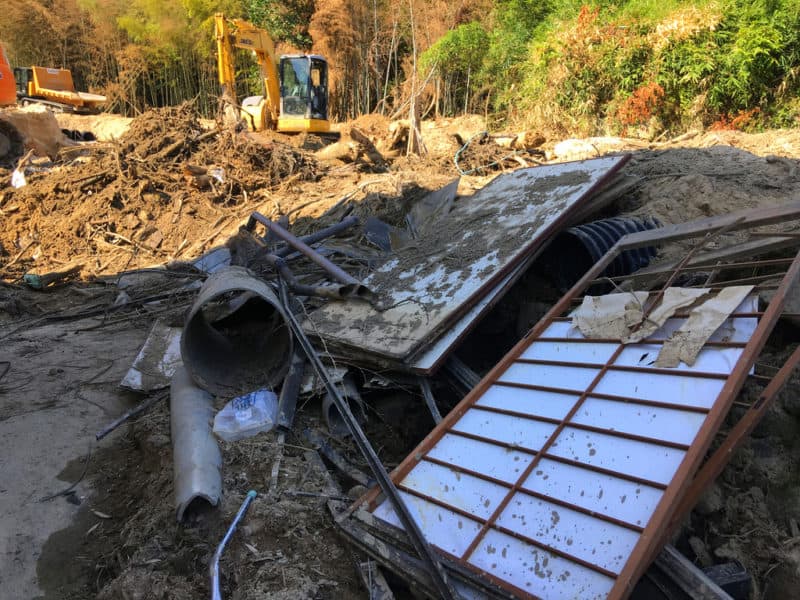 At the volunteer center, when we returned from volunteering, they scrubbed our boots and asked us to also step in a disinfectant solution to make sure the bacteria from the mud would not be transferred outside the area. We gargled with a watery iodine solution, washed hands with soap and were given cold drinks and candies. On this day, we were also given certificates of completion of volunteering affixed with an official stamp. This is the first time I have seen this paper which would be useful for students and other volunteers who want to keep official records or get volunteering (community service) credit with their schools or workplaces. I have promised the local staff that I will bring an English (bilingual) version of this form for them to use with any interested international volunteers.
At the volunteer center, when we returned from volunteering, they scrubbed our boots and asked us to also step in a disinfectant solution to make sure the bacteria from the mud would not be transferred outside the area. We gargled with a watery iodine solution, washed hands with soap and were given cold drinks and candies. On this day, we were also given certificates of completion of volunteering affixed with an official stamp. This is the first time I have seen this paper which would be useful for students and other volunteers who want to keep official records or get volunteering (community service) credit with their schools or workplaces. I have promised the local staff that I will bring an English (bilingual) version of this form for them to use with any interested international volunteers. 
- Kuchita sponsors Volunteers for Insurance, so you do not need to buy it or have it to volunteer at this location.
- Google Map to Kuchita Elementary School (Free parking area across from Volunteer sign-in)
- First Volunteering Experience Volunteering for 2 hours at Kuchita (Asa-Kita-Ku)
- 5 Point Advice for First Time Volunteers
- Volunteering at Shiraki (Asa-Kita-ku) 40 minute drive from Hiroshima station
- English Volunteering Handbook PDF gives advice in detail useful for 1st-time volunteers in Japan. Or see the post listing the pages of the English Handbook for Landslide Disaster Volunteering here



